Click here to return to Blog Post Intro
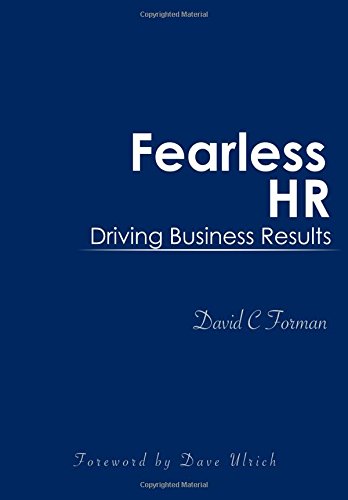
Fearless HR is about HR’s purpose and identity going forward. It is about driving business results. Foreman’s book identifies four steps HR must take to drive business results:
- Improve HR’s talent and capabilities
- Enhance HR’s professional networks–make them broader, more inclusive and stronger
- Leverage the levers at its disposal to both save costs and improve productivity, and
- Demonstrate a bolder mindset.
This is a business book about HR, not an HR book about business. Most of Fearless HR focuses on strategic as opposed to operational HR activities. HR must move more toward evidence-based decision-making and shed the perception that HR is not good with numbers.
The overarching theme of Fearless HR is that HR can and should drive business results. Let’s look at five perceptions of HR then explore opportunities ahead for leaders in the field…
Perception One: HR Does Not Add Value to the Business

Human Resources started as an administrative function, and it is part of organization overhead—two obstacles to a strong value proposition. HR’s value comes from creating a workplace and workforce that strengthens business outcomes, enhances productivity and fosters innovation. HR can be a force multiplier because it reaches many more people and impacts the business way beyond the direct contribution of HR staff themselves.
In Good to Great—the best-selling business book of all time, Jim Collins notes that great companies “get the right people on the bus, the wrong people off the bus and the right people in the right seats—and then they figure out where to drive it.” He goes on to emphasize that the old adage that people are your most important asset is wrong. The right people are.
High-performing organizations ask the 6 R’s: do we have the right people, in the right job, with the right skills, at the right place in the right time for the right cost?
Perception Two: HR is Siloed and Too Inwardly Focused
HR has increasingly become more siloed as compliance has become more complex and legally sophisticated because HR has an important role of protecting the company, mitigating legal risk and reducing outstanding lawsuits.
Dave Ulrich notes that an HR evolution using a 4P framework: From Polite to Police to Partner to Player. To add more strategic value, HR professionals must become better business people, have a broader vision and be able to take actions that improve business processes and outcomes. If not, they will again be relegated to just administrative and operational roles.
This discussion about strategic HR has been going on for decades, and as late at 2012 researchers documented that HR professionals are spending only about 6 hours per week on strategic activities, and this figure has not changed in twenty years.
Terminology of state-of-the-art HR include: business opportunities, risks, solving business problems, data-driven and fact-based. These are not characteristic of a siloed HR perspective; they are business terms and concepts that HR leaders are expected to embrace.
Deloitte notes that the role of the Chief HR Officer is changing, “In this era of rapid business change, the role of the CHRO becomes radically different and more demanding than ever. Today’s CHRO must be innovative and business-savvy and be able to stand toe to toe with the CEO. At the same time, a CHRO must know how to bring the HR team together and help it evolve into a more distributed, business-integrated function. CHROs must also be comfortable adopting and embracing technology and analytics, which are integral to HR’s future success.”
Perception Three: HR is a Weak Discipline with Poor Tools
HR has often used its role as “policeman”, arguing that rules, regulations and standards must be followed because penalties and fees will result if deviations occur. This “police” role of HR, when obsessively followed, can contribute to the perception that HR is too process-driven.
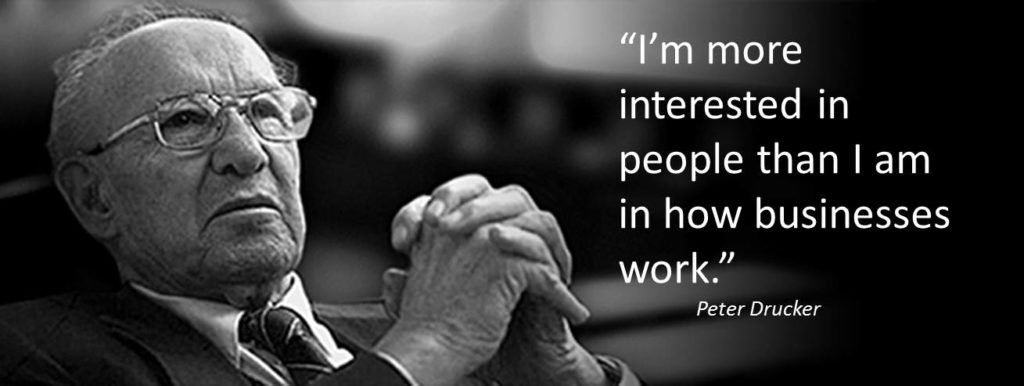
Peter Drucker noted, “The ability to make good decisions about people represents one of the last reliable sources of competitive advantage, since so few organizations are very good at it.”
The business strategy needs to be the driver of talent practices. An integrated system of talent practices help achieve business results. Strategic Workforce Planning (SWP) is one of the least mature talent practices. It has evolved from manpower planning and forecasting to consider different futures in a VUCA (volatility, uncertainty, complexity and ambiguity) world. Taken from the military, VUCA is now used to describe the various types of situations that can shake and topple organizations and even industries.
The Human Capital Institute’s Strategic Workforce Planning Methodology was developed in 2010. Like all workforce planning models, it compares the current state to a future state, identifying gaps and then taking action to close the gaps. Strategy drives the methodology. The time horizon is typically 3 to 5 years. SWP methodology categorizes talent across four roles:
- Strategic: Necessary to achieve strategic goals and future success (10 to 15%)
- Core Operational excellence: The engine of the enterprise that is core to delivering products and services (20 to 25%)
- Supporting Internal operations: work efficiently; supporting core and strategic roles (60 to 70%)
- Misaligned Jobs: no longer provide value; employees can be redeployed (Goal is 0%)
Stephen Covey said, “We don’t need more intelligence in organizations (IQ), we need more XQ—the execution quotient. Instead of worrying about more or better tools, let’s worry more about being the drivers of change, executing well, speaking persuasively and improving the business with the models and methodologies we have at our disposal.”
Perception Four: HR Measures are Too Soft and Subjective
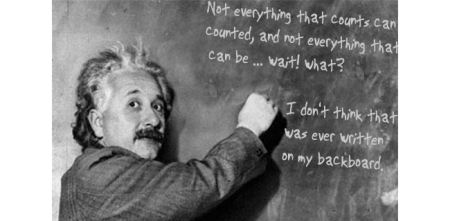
In HR, it’s easy to measure processes. So, in hiring, HR often measures time to hire. You can be very efficient at bringing in all the wrong people into the organization! A more valid recruiting measure is Quality of Hire (QoH) because it addresses effectiveness and impact.
Scott Pollack of Price Waterhouse Coopers reported, “We have seen a sea change in the last 12 to 18 months. We see CEOs and others wanting better data and not just a head count report, but how talent is driving business results. There is clearly movement to more integrated data, on-demand access and predictive analytics that can help manage tomorrow, today.”
Google studied the value of effective people managers and identified eight characteristics that make a difference:
- Be a good coach
- Don’t micromanage
- Express interest in team member’s success and well being
- Be productive and results oriented
- Be a good communicator and listen to the team
- Help employees with career development
- Have a clear vision and strategy for the team
- Have technical skills so that you can advise the team
These characteristics are listed in order of importance with being a good coach at the top of the list. While many believed that technical skills would be more important than some of the “softer” manager qualities, that was not the case. Finally, while many of these characteristics may be “common sense,” they were not clearly common practice. Google, therefore, took great strides to incorporate these characteristics into training, recognition and development programs as well as into ongoing surveys and analytics.
For your organization, consider what attributes distinguish your most successful managers from others? What are the characteristics of managers with the highest employee loyalty?
There are two fundamental purposes for using analytics: 1) find out what works and replicate it, and 2) identify possible risks before they become problems. These two goals contribute to HR being a “force multiplier” (spread success) and “a lead time ahead” by proactively identifying risks. Analytics, then, are not a nice to do activity, but fundamental to HR creating the context in which talent and innovation flourish; improving business results through better alignment, cost savings and productivity improvements; and becoming a trusted and effective business leader. Data-driven HR is paramount to driving business results.
Perception Five: HR is a Stodgy Dead-End Career
Let’s face it, the HR profession is not held in the highest regard…
As early as 1981, Professor Wickham Skinner of the Harvard Business School penned an article entitled “Managing Human Resources.” It was not a complimentary view, and he invoked the Texas descriptor of “Big Hat, No Cattle” to imply that the HR profession was all promise and no action. There was no there, there according to Skinner.
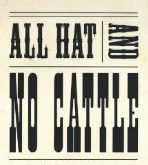
In 2005, Keith Hammonds challenged the HR profession with his Fast Company article entitled “Why We Hate HR”. He pointed out that HR people don’t speak the language of the business; pursue efficiency in lieu of value; measures activities and internal practices, not outcomes or results; and pursues standardization and uniformity.
Then in 2015, Kyle Smith in Forbes wrote “It’s Time for Companies to Fire Their HR Departments.” The reasons he cites for HR’s failings are familiar: they speak gibberish; revel in red tape; live in a bubble; and aren’t really in your business.
Harvard MBA graduates Britfelder and Dowling describe the reaction of their peers when they chose to go into HR, “A career in human resources isn’t the typical destination of a Harvard MBA. We’re supposed to be employed as strategy consultants or investment bankers, or in the true spirit of the degree, general managers. We once had those jobs, but we don’t now, and we know what our classmates are thinking: ‘It’s a work/life balance thing. They don’t have the stomach for ‘real business.’ If you can’t do, teach. And of course our favorite: ‘If they’re so interested in helping people, why don’t they just go into social work. Well the answer is simple, and we relish providing it. HR today sits smack-dab in the middle of the most compelling competitive battleground in business, where companies deploy and fight over the most valuable of resources—workplace talent.”
In his book Winning, Jack Welch explained that one of his primary management tenets at GE was to “elevate HR to a position of power and primacy in the organization and make sure HR people have special qualities to help managers build leaders and careers.” He went on to say, “Without doubt, the head of HR should be the second most important person in the organization. From the point of view of the CEO, the head of HR should be at least equal to the CFO…After all, if you managed a baseball team, would you listen more closely to the team accountant or director of player personnel. The input of the team accountant matters—he or she knows how much to pay a player. But this input certainly doesn’t count more than input from the director of player personnel who knows just how good each player is.”
In his Summer 2014 article entitled “It’s Time to Split HR”, Ram Charan—a highly respected management consultant, thought leader, and author—explained that CEOs tell him they want HR to be more strategic. Charan believes that the current HR structure mitigates against this likelihood. He proposes an HR-A group that reports to the CFO and focuses on administration, benefits and compensation. He then proposes an HR-LO (leadership and organization), reporting to the CEO and focusing on improving the people capabilities of the business.
Another prominent example of splitting HR into strategic and operational groups is the U.S. Government’s Chief Human Capital Officer (CHCO) Act of 2002. The CHCO Act was enacted as part of the Homeland Security Act and required 24 government agencies and departments to appoint a Chief Human Capital Officer whose job would be to modernize HR, revamp HR policies, project future talent needs, and improve the ability to hire, engage, develop and retain employees. This act also established the CHCO Council to encourage collaboration and common approaches among the 24 CHCOs. HR Departments continue to exist, but they focus on operational and transactional activities. HR and CHCOs serve side by side in the government, each with different purposes and roles.
Cisco split HR into tactical and strategic wings with the latter focusing on such initiatives as strategic workforce planning, career plans and assigning metrics aligned to overall business strategy. Don McLaughlin, Vice President of Employee Experience at Cisco, discussed the logic of this separation. “For a number of years, there has been a notion of getting HR to become a more strategic partner to the business, to really understand talent management, workforce planning and organizational design, to fully comprehend where the business is heading and how to make it grow. But the business always wants immediate help in the transaction space. The tyranny of the urgent draws resources into day-to-day work, and it creates a struggle of ever getting to the higher level of work.”
The Opportunities
The future vision for HR, as espoused in Fearless HR, is to drive business results. Because change is altering the future, HR must craft a compelling future vision.
Building HR’s Capability
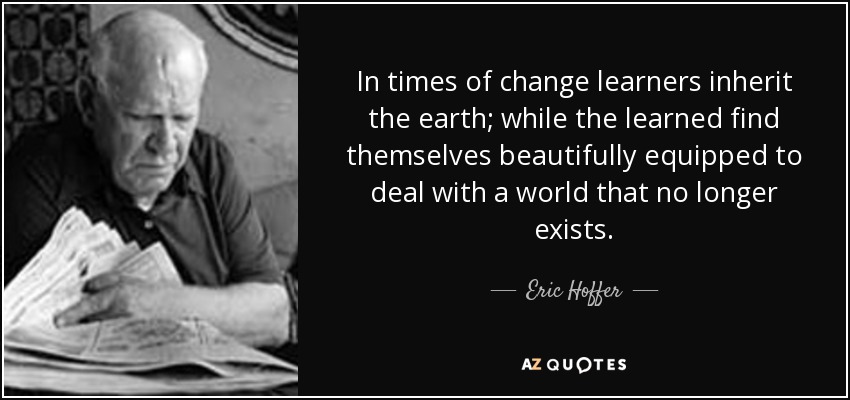
A number of HR competency models have been developed over the years. The most comprehensive and enduring is the HR Competency Study (HRCS) performed by the RBL (Results Based Leadership) group, beginning in 1987 and now in its seventh iteration. In 1987, the model highlighted three broad competencies: Business knowledge, HR delivery and Change. In 1997, the Culture competency was added. In the 2002, the new competency of Strategic Contribution was added as well as a new HR Technology competency.
Two competencies—Strategic Contribution and Personal Credibility—explained 60 to 70% of both individual and business performance. It was noted that 20% of a business’s success can be attributed to HR professionals.
The biggest issue with HR competency models is that they are internally focused. They make sense to HR professionals, but not to business leaders. The HR profession must be able to articulate “what HR must do better” so that it can fulfill the purpose of driving business results.
To that end, HR plays four key roles. The first is Strategic Architect. This signifies that HR is firmly in the strategic camp and that, as an architect, HR analyzes function, relationships, patterns and structure of the organization.
The second HR role is as a Force Multiplier. HR professionals have the opportunity to influence the organization beyond what their individual contribution would suggest by shaping the environment. The third role is for HR to be a Network Builder. This role increases collaboration, sense of community, and innovation across the organization. The fourth role is Operational Executor. While HR can and must play in the strategic arena, it must also deliver on its operational tasks.
HR must focus on being a “continuous learner”—an essential quality because of the unrelenting change that organizations face. HR must also create a diverse team to reflect the people in the orbit of the organization, including employees, customers, partners and shareholders. Research is very clear that heterogeneous groups lead to different ideas and more innovation than homogeneous teams. Diverse groups can be more challenging to manage, but the payoffs are significant. The more the workplace looks like the marketplace, the higher the likelihood that new connections and value will be created.
Strengthening Professional Networks and Communities

There is an organizational need for greater connections and collaboration. As Gary Hamel puts it, “Communities outperform bureaucracies every day of the week.”
It is time for businesses to recognize that building professional networks and communities is a mission-critical HR role. People join companies but leave managers, but colleagues and co-workers also matter. The following Q12 questions from the Gallup organization at least touch on this domain:
- In the last seven days, have I received recognition or praise for doing good work?
- Does my supervisor, or someone at work, seem to care about me as a person?
- Is there someone at work who encourages my development?
- Are my co-workers committed to doing quality work?
- Do I have a best friend at work?
- In the last six months, has someone at work talked to me about my progress?
Fully half of the Q12 address, directly or indirectly, the environment created by colleagues and teammates.
Implementing the Right HR Levers
As Ram Charan notes, “Businesses don’t create value; people do.”
As an organization’s people function, HR has three levers to drive business results:
- Strategic Alignment: This lever pertains to the ability to execute the company’s strategy and business goals. If the workforce is not aligned to the right strategic direction and business goals, there is little chance the strategy will be properly executed.
- Cost Savings: HR can improve the profitability of the business by leading initiatives that reduce costs. These savings to the bottom line are usually immediate and direct;
- Productivity Improvements: HR can grow the top line of the business through its ability to be a force multiplier and implement effective—not just efficient—talent practices.
While cost savings and process improvements continue to be significant, HR professionals today must shape the organization and create the context in which talent and innovation flourish.
Steven Director points out, “The amount a firm can save by reducing inefficiencies in HR processes is usually insignificant compared to the amount it can gain by building a more talented and engaged workforce.” Workforce alignment is about optimizing and leveraging human capital resources to best execute strategy.
HR is the one function that touches every person in the organization, and with the right talent, capabilities and professional networks, HR professionals can and do drive business results.
Demonstrating a Fearless Mindset
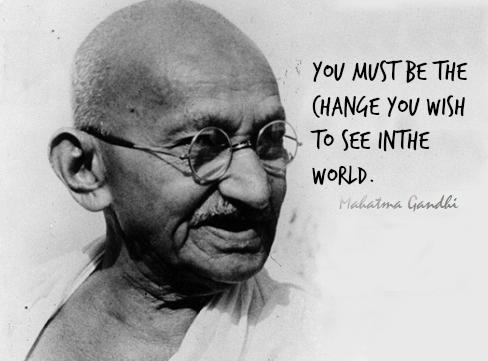
HR professionals have to be able to deliver on promises and expectations. HR drives business results, and to accomplish this goal, HR must be fearless. It must not be a silent partner or a tentative player. With this confidence and positive mindset—together with the skills and colleagues to deliver the goods and a path made clearer by practical examples—HR can achieve its new aspirations and make significant contributions to the health and strength of the business.
One of the best-selling business books of all time is Blue Ocean Strategies (2005) by W. Chan Kim and Renee Mauborgne of INSEAD. The authors argue that instead of attempting to fight competitors in crowded marketplaces (i.e., red oceans), the greatest value is achieved through creating blue oceans of uncontested market spaces. In blue oceans, the marketplace is unknown, demand is created not fought over, and there is ample opportunity for growth that is both rapid and profitable. Apple, of course, is the best example of a company that has created new industries where there were none, and accordingly is the most valued brand in the world. Cirque de Soliel is another example of a “Blue Ocean” by blending the circus art form with ballet and opera, while eliminating typical circus actors such as star performers and tamed wild animals.
As HR professionals become recognized as business leaders, they must take a longer-term view, see the bigger picture and embrace blue ocean thinking as a potential fertile landscape for improving business results.
Every HR professional needs to be a role model for what HR can become. This sets an example, elevates the status of the profession and demonstrates the right behaviors to colleagues. Another step is for HR leaders to take an active role teaching other leaders and employees. The HR leaders become not only the most visible role models, but they also take an active role in transmitting the values and behaviors of HR driving business results.
Think about the purpose of HR. My conclusion was that I did what I did to help others improve their workplace and workforce.
Fearless HR advocates the broad purpose of HR driving business results through:
- Creating the context in which talent and innovation can flourish
- Improving business results through better alignment, cost savings and productivity improvements, and
- Becoming a trusted and effective business leader.
In order for HR professionals to be respected and valued they need to be: improving their skills and abilities; adding to their experiences; broadening their professional networks; pulling the right levers; using data to make wiser decisions, becoming better business people; and then coaching others to enhance HR’s new legacy of driving business results.
The term Fearless is a careful choice as the adjective for mindset and obviously the title of this book. Fearless has a strong and firm connotation, but it does not mean being reckless, arrogant, foolhardy or rushing to judgment. It is not an attitude, but a series of actions and qualities. A Fearless HR professional is one who is evidenced-based, sees the bigger picture, analyzes business issues, is a force-multiplier, and then, when ready to act, does so boldly and with a strong, resolute point of view.

